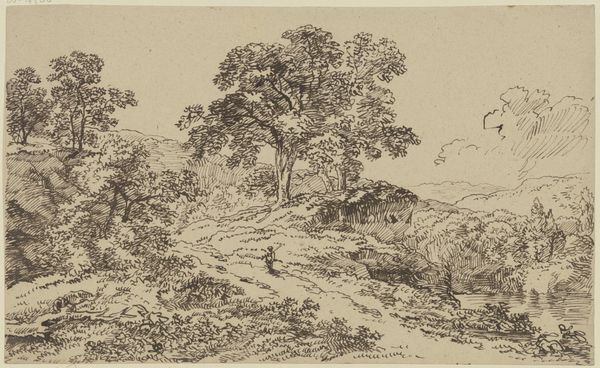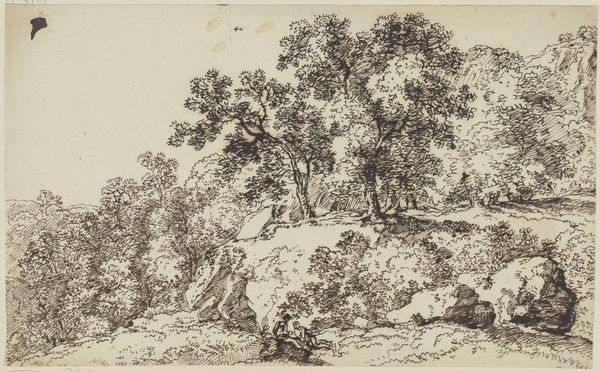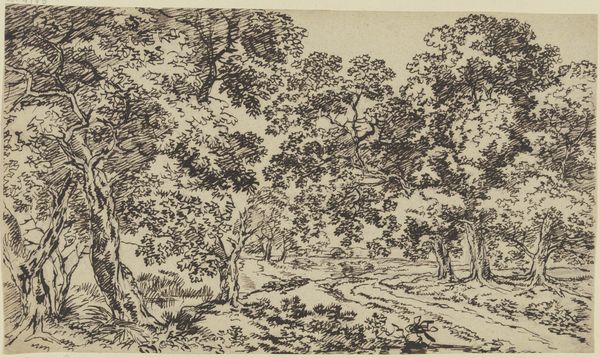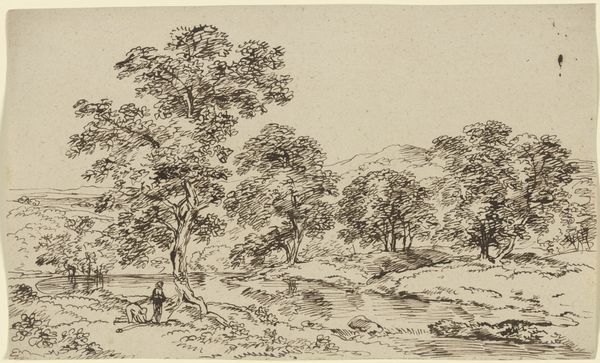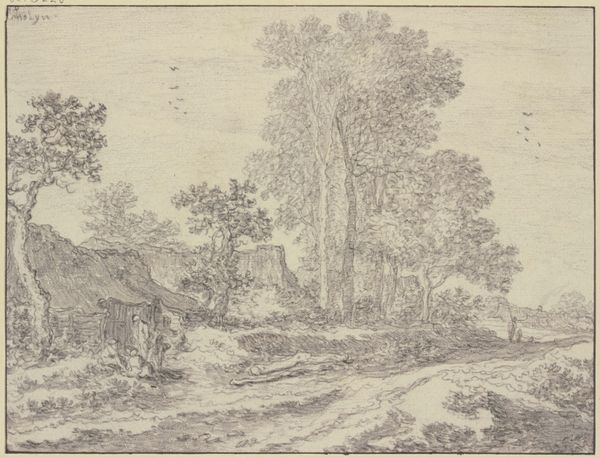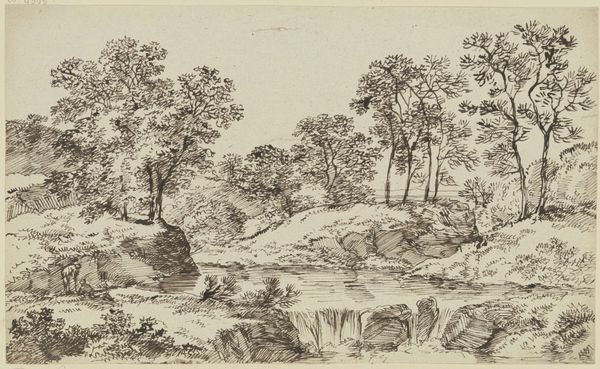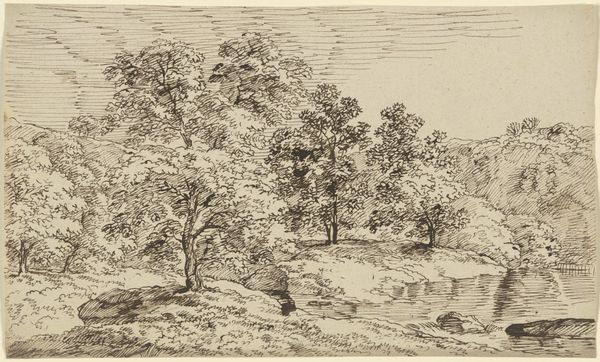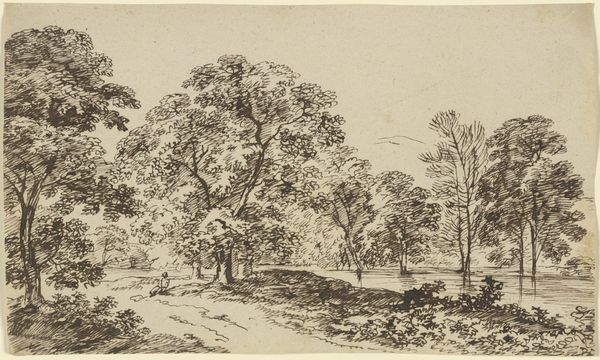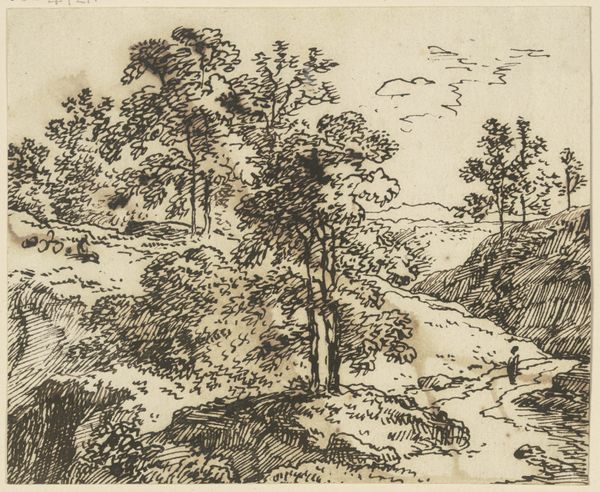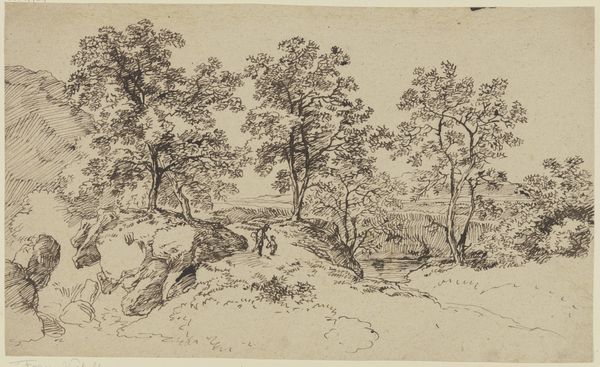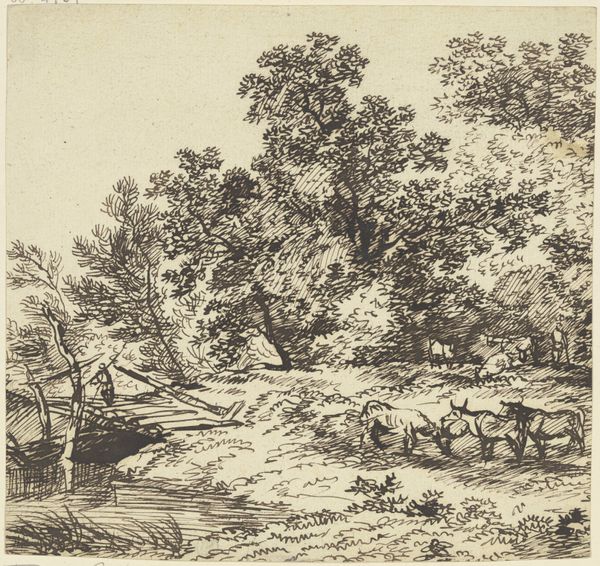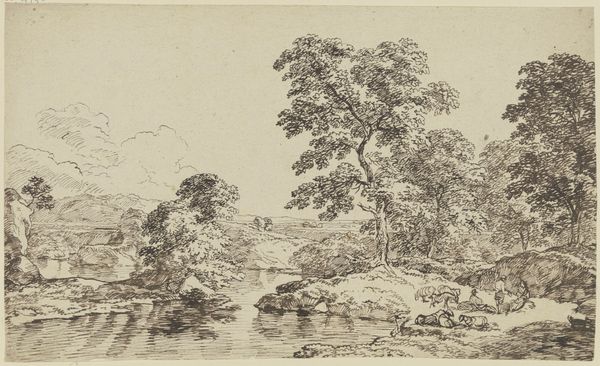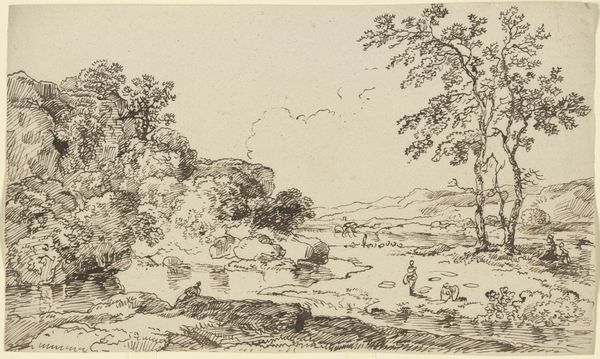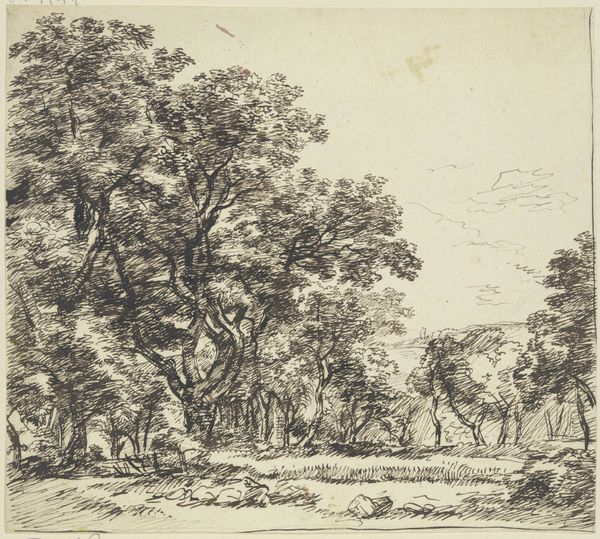
drawing, ink
#
drawing
#
landscape
#
ink
#
romanticism
#
15_18th-century
#
line
Copyright: Public Domain
Curator: I find myself drawn to the tranquility of this drawing; there's something deeply serene about it. Editor: Let’s delve into Franz Kobell’s "Alter Baum auf einem Felsvorsprung in einer Wiesenlandschaft," housed here at the Städel Museum. It's an ink drawing—remarkably spare yet suggestive—demonstrating line work, a hallmark of the artist’s style. I’m fascinated by the choice of material itself; the relative inexpensiveness of ink allowed broader artistic participation at the time. Curator: True. The artist makes exquisite use of those materials to craft a vision of the natural world seemingly untouched. But this idyllic scene, with that ancient tree perched dramatically, wasn't purely observational, was it? It aligns, as I see it, with broader cultural shifts in representations of nature at the time. Editor: I’m struck by the technical skill demonstrated here—notice the hatching used to build volume and the different line weights defining depth, it’s clear the paper stock the artist would’ve used was able to handle such levels of intricate working. But also think about how the ready availability of ink drawing as a reproductive medium meant that these types of images, were much easier and faster to replicate than painting for instance. How the social context drove that adoption in culture… Curator: An excellent point. Its mass production fed the popular Romantic appetite for idealized, sublime landscapes removed from industrial reality. Editor: It makes one ponder what a Romantic audience saw reflected in this. Was it an affirmation of social hierarchy through landscape ownership, or a quiet subversion expressed in an ideal that was unachievable by many? Curator: Perhaps both. These artworks became increasingly entangled with ideas about nationhood, identity, and the “picturesque” movement… They provided a template for seeing and possessing the landscape, which, of course, carries enormous socio-political weight. Editor: It reminds us that art, regardless of its scale or medium, operates within specific economic, cultural, and ultimately political systems. Curator: Exactly, there's something almost inherently coded about that landscape through the medium used. Editor: Thinking about these intertwined aspects gives me much to consider. Curator: Absolutely, it reframes our viewing experience, enriching it with social context.
Comments
No comments
Be the first to comment and join the conversation on the ultimate creative platform.
